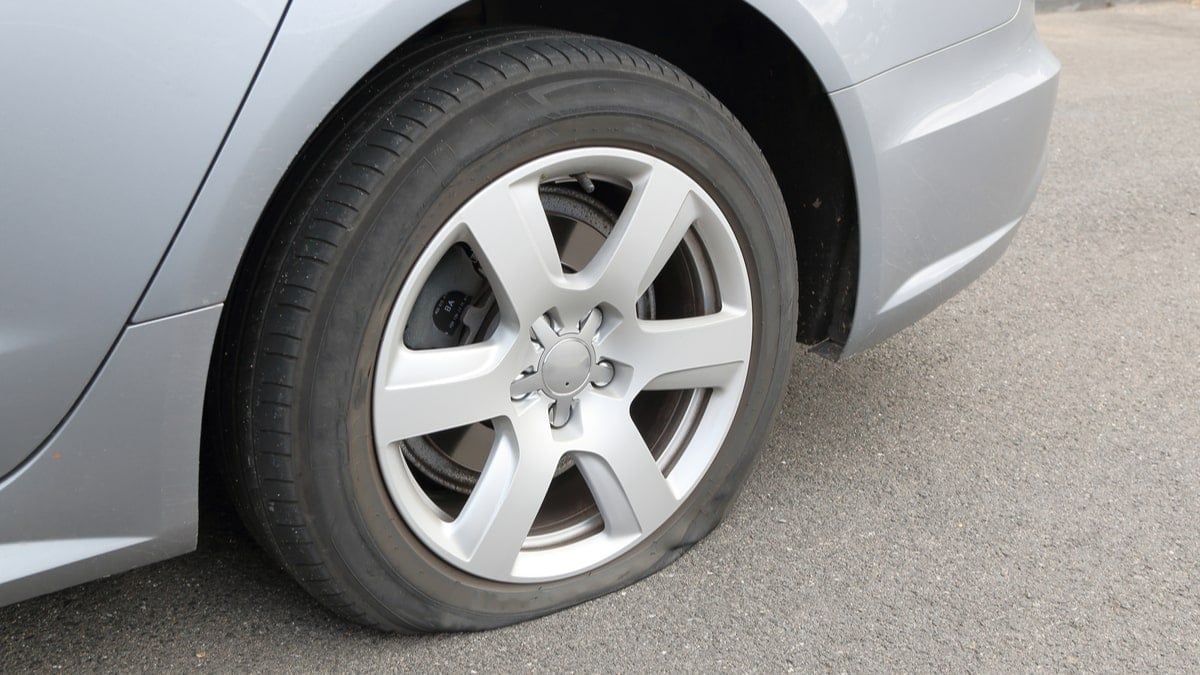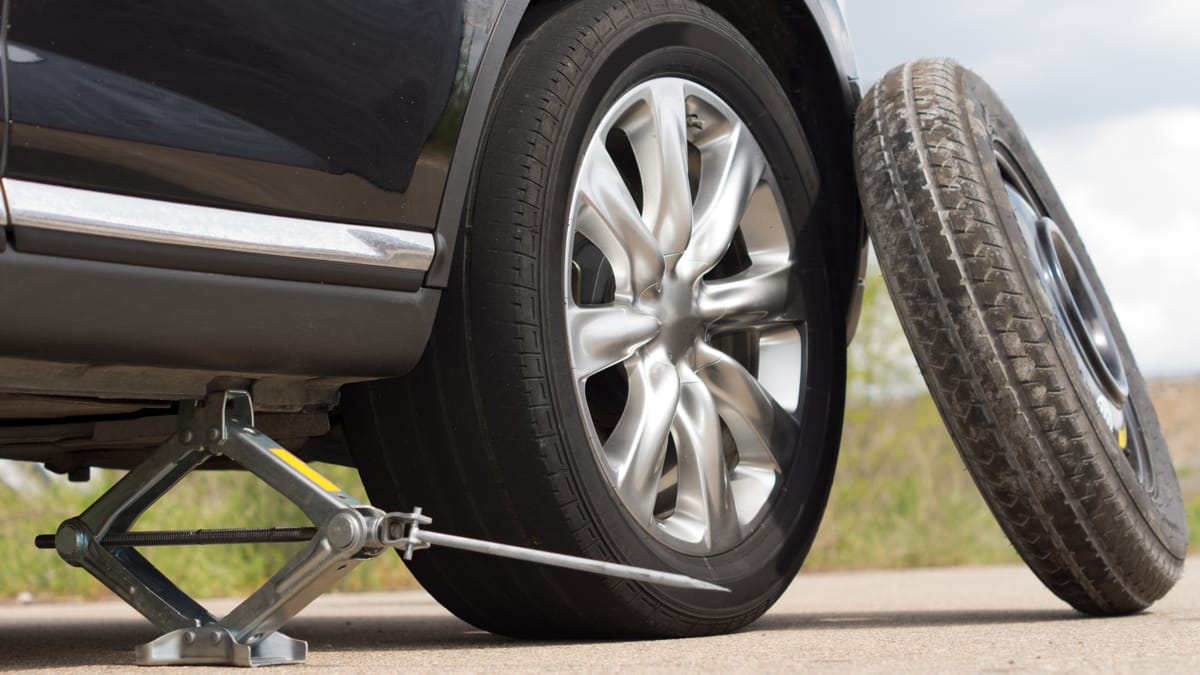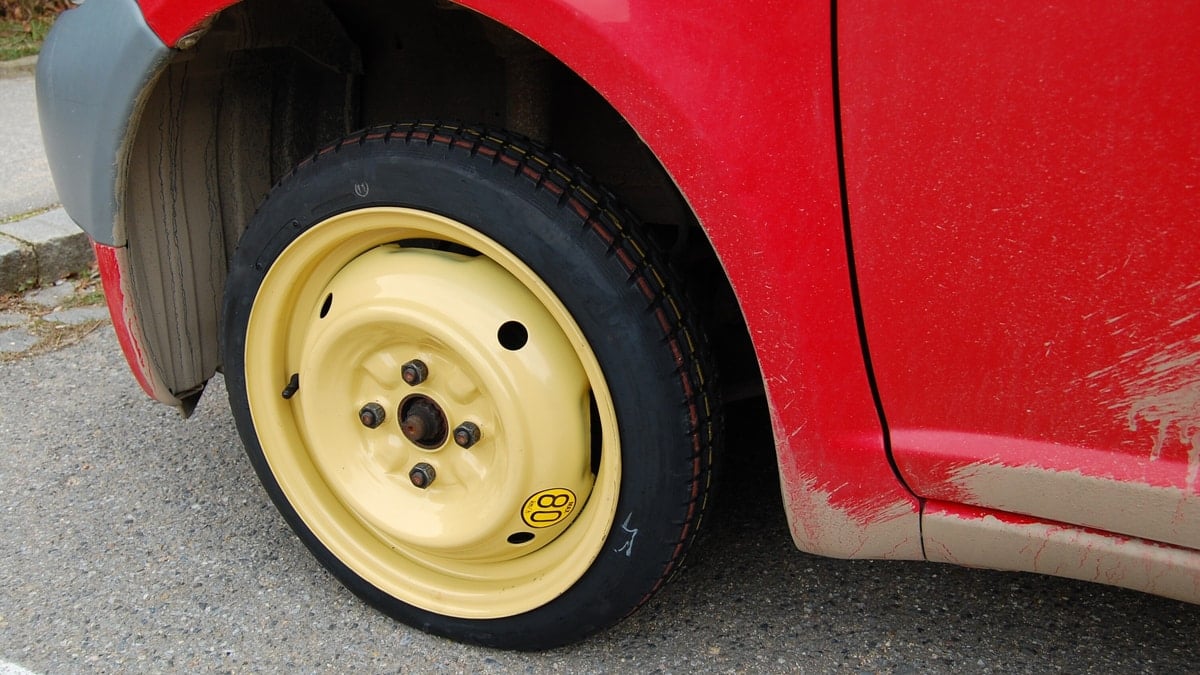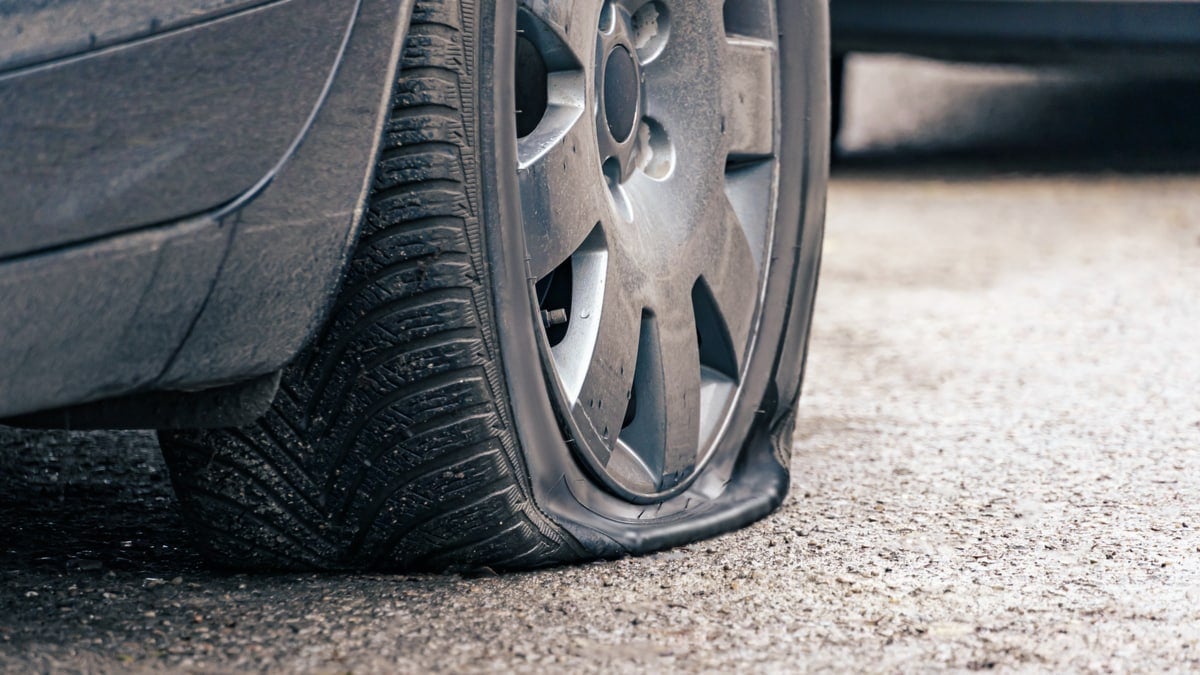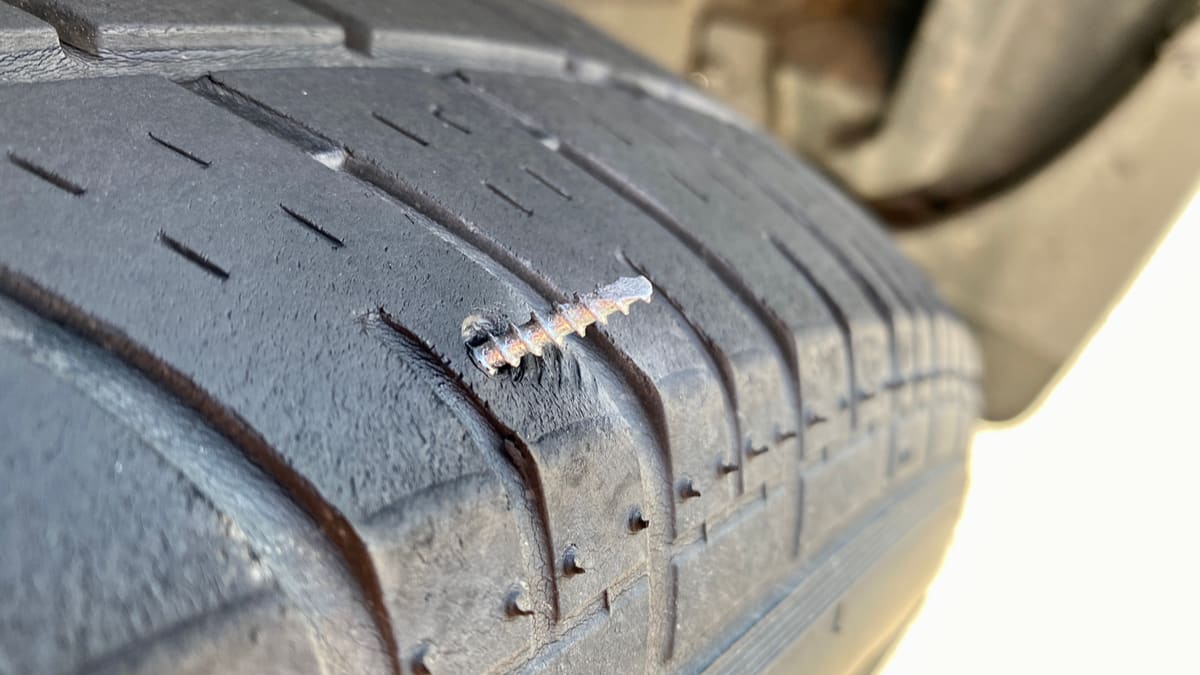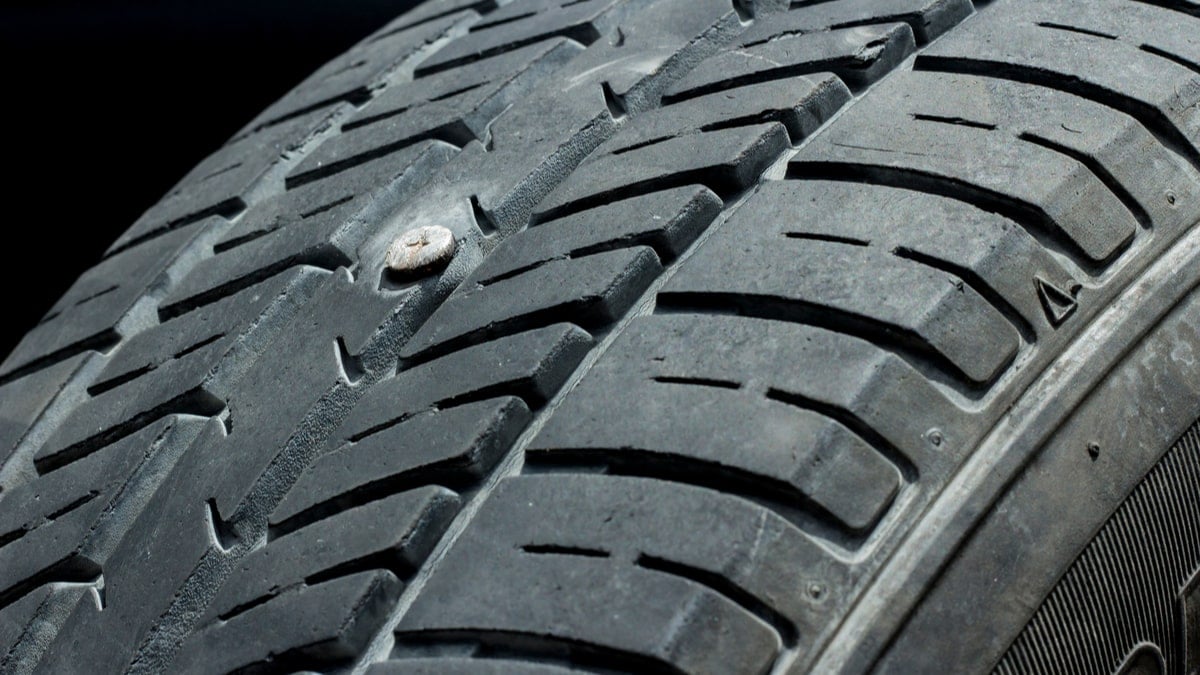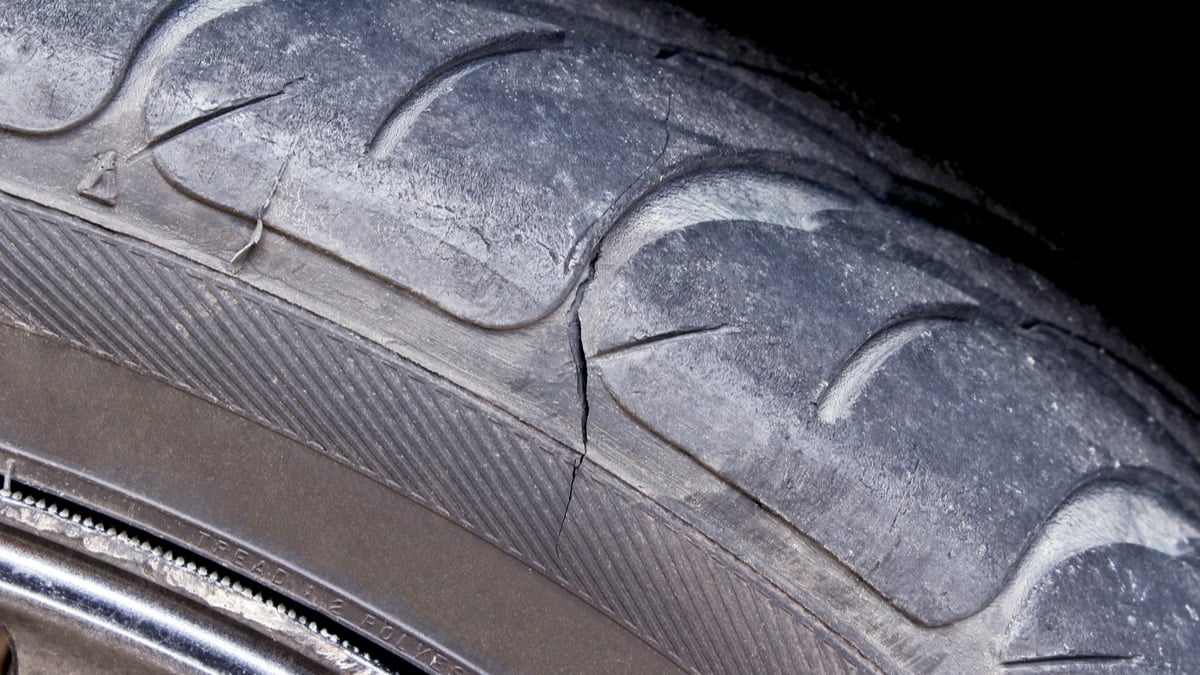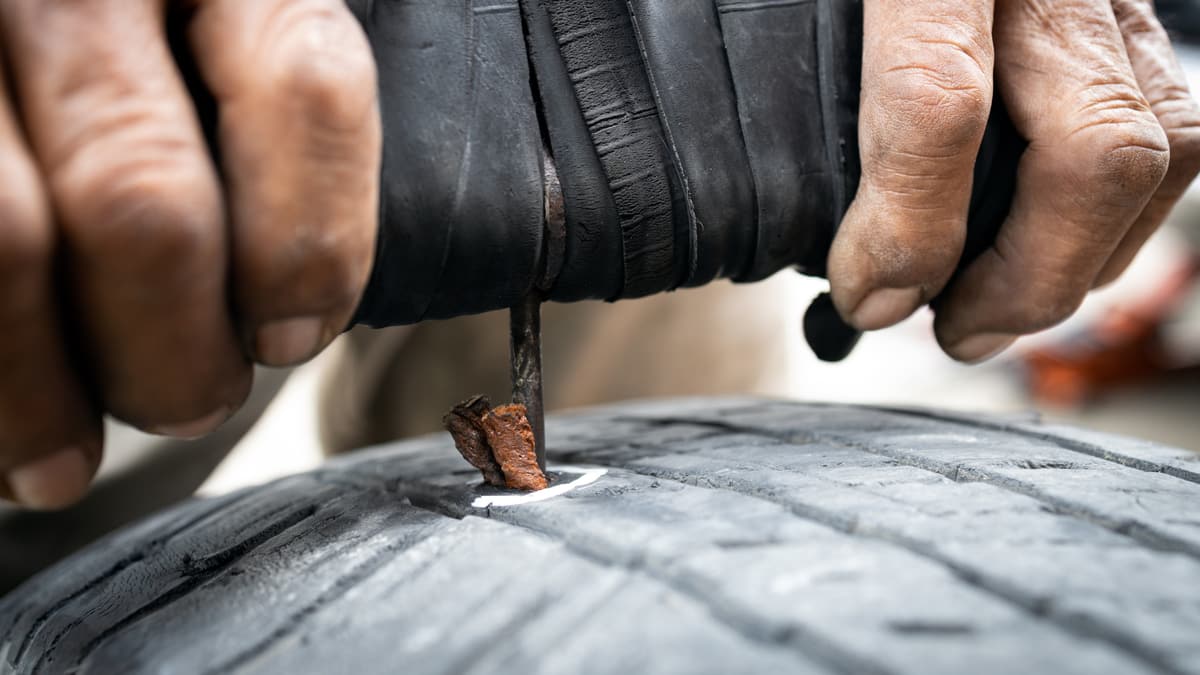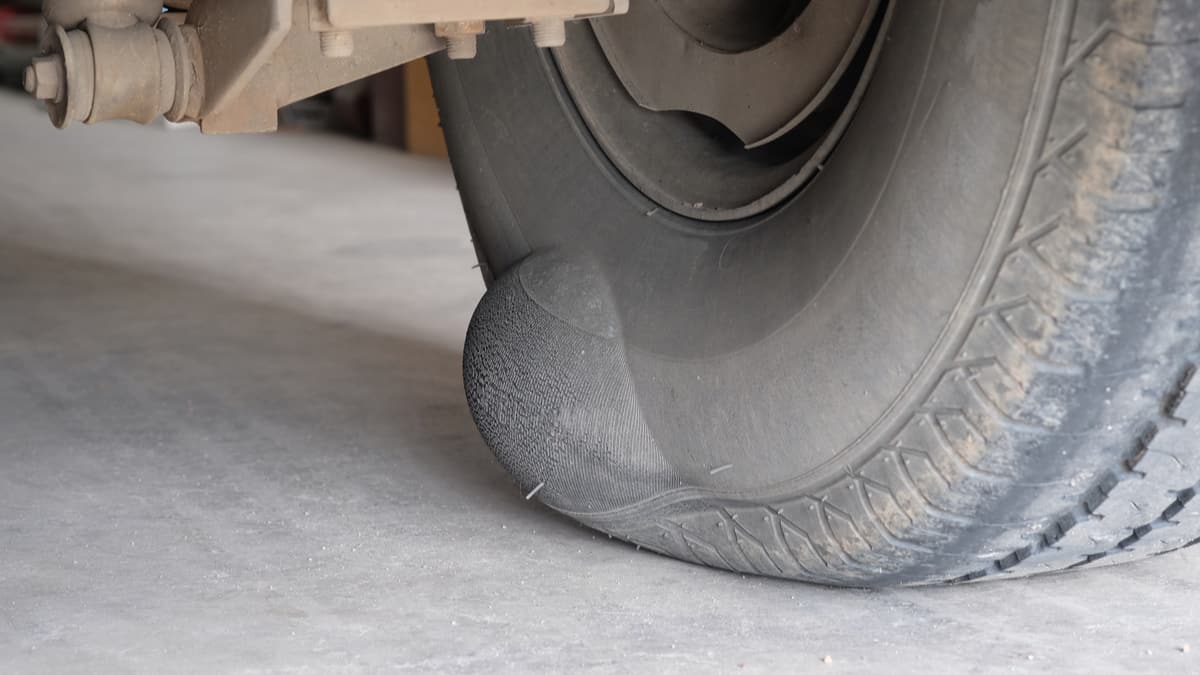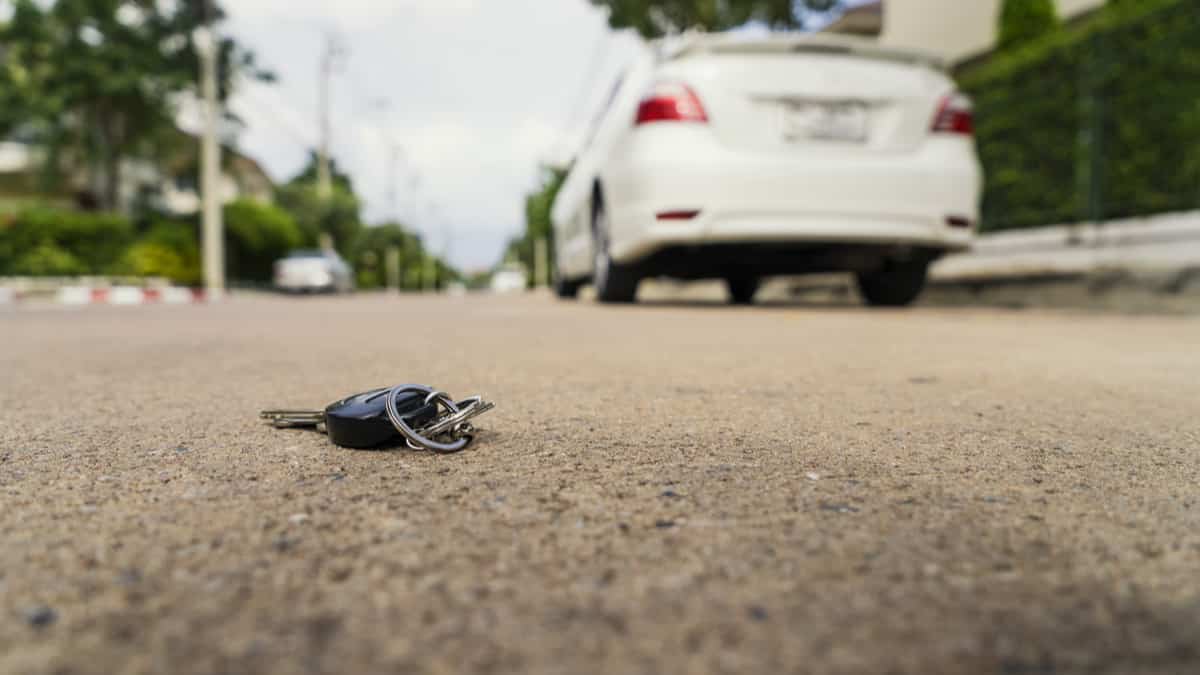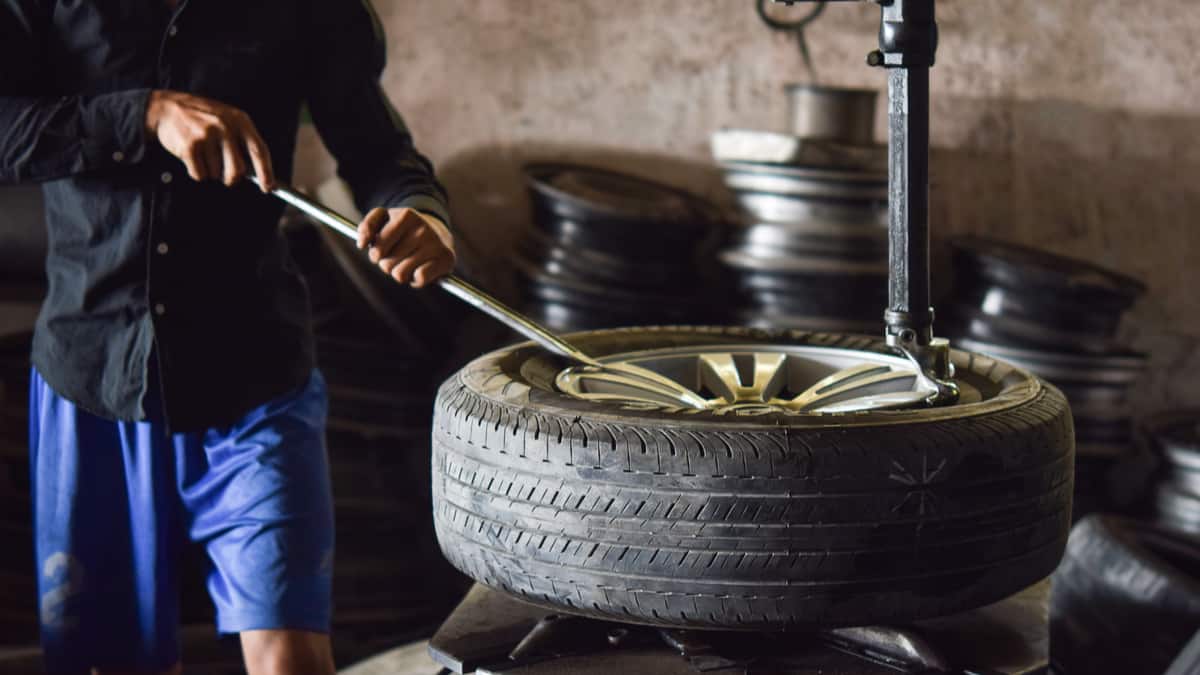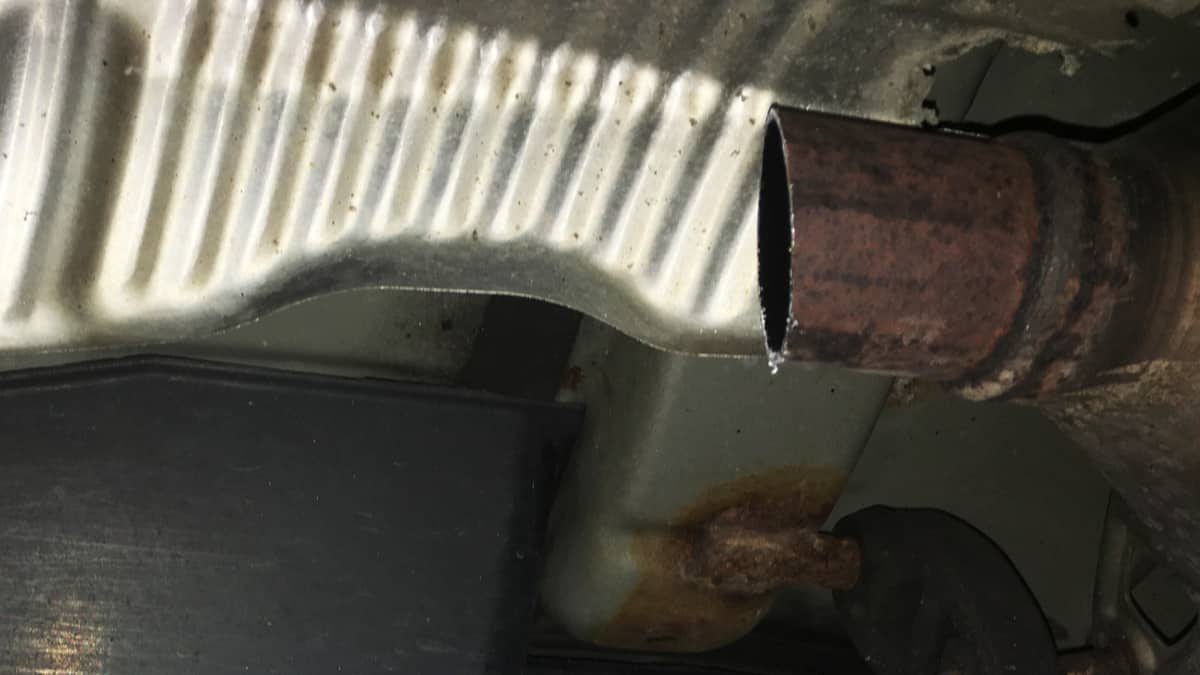Most people know how to handle a flat tire, especially when a spare tire is provided with the vehicle. However, do you know how to fix a flat tire when there is no spare included? It’s something that’s happening more frequently with newer models.
It’s important to evaluate your options to determine what’s best in your situation. It’s also best to change your driving habits or make some other changes that prevent this problem from happening again.
How to Fix a Flat Tire Without a Spare?
The safest option when you have a flat tire without a spare is to call roadside assistance and have the car towed to a tire repair shop. However, if you want to do it yourself, you could also choose the factory-provided tire repair kit, an aftermarket tire plug kit, or Fix-a-Flat, but there are downsides to each of these options.
Below is some more detailed information on how to fix a flat tire without a spare.
1. Call Roadside Assistance
If you drive a newer vehicle with a warranty, you might also have a roadside assistance plan. These free services make it simple to get the help you need with a flat tire. Even if it’s not included, you might pay extra to use roadside assistance through another company, such as AAA. If so, get out your phone, make the call and wait patiently for the tow truck to arrive.
Even if you don’t have a free plan, you might prefer to call a tow truck anyway. It’s the safest option and it doesn’t have to be too expensive. You might be able to get a tow across a short distance for as little as $50, depending on where you are. The most difficult part is ensuring you are safely off of the road while you wait.
RELATED: Nail in Tire – What to do & Is it safe to drive with?
2. Use Included Tire Repair Kit
When manufacturers don’t include a spare tire, there’s often some form of repair kit in the vehicle. The kit might include a can of sealant and a small compressor. The sealant can plug a small hole, such as something that occurs after running over a screw or nail. However, this fix is only temporary and it might permanently ruin the tire.
Once you put the sealant in the tire, fill it back up to the appropriate air pressure. You can find this figure on the driver’s side door jamb. Drive right to the tire repair shop for a more professional repair. Additionally, don’t forget to replace the kit in case you get another flat tire down the road.
READ MORE: How to Find the Correct Tire Pressure For Your Car (4 Steps)
3. Use Tire Plug Kit
If you are near an auto parts store, you could pick up a tire plug kit. These kits include sticky rubber material and a tool to plug the hole. If the hole is in the tread of the tire, it might be repairable.
Follow the instructions on the pack to get the rubber material perfectly secured in the hole. You will also need to fill the tire back up with air because you don’t want to drive on a flat tire. Here are some basic instructions that should get you back on the road.
- Find the puncture hole.
- If there’s an object still in the tire, carefully remove it.
- Create a clean-looking hole with the reaming tool.
- Put the plug on the tool with the adhesive material and force it down into the hole.
- Carefully pull the tool back out to secure the plug.
The tire plug isn’t considered a permanent fix. It’s always best to have a professional take a look at the work you’ve done to ensure integrity.
READ MORE: Are Tire Plugs or Tire Patches Better?
5. Apply Fix-a-Flat Sealant
If your vehicle doesn’t have a spare tire or the equipment to repair it, you can purchase Fix-a-Flat at a local auto parts store. Some people even choose to keep a can in the car for these emergencies.
This product works just like the factory tire repair kit, so you should be familiar with it. The slime or foam substance in the can is pushed into the tire to seal up small holes. Plus, air pressure is forced into the tire to re-inflate it.
However, Fix-a-Flat can be messy. Many of the best tire shops won’t work with a tire once you’ve used the product and there could be an additional charge if they have to clean up the rim for you. However, if the tire isn’t going to be salvageable anyway, it could be a cheap way to get you to the shop.
RELATED: Screw in Tire – What to Do & Is it Dangerous to Drive With?
Why Doesn’t Your Car Have a Spare Tire?
Back in the day, most cars were equipped with a donut spare tire. It is a smaller spare tire that provides enough capability to get you safely to the local repair shop. However, these aren’t being automatically installed with many of the newer cars but are offered as an optional purchase instead. This leaves a lot of modern vehicles without a spare tire.
Newer configurations have removed the space where the tire used to be mounted or stored. Automakers have been under continual pressure to produce fuel-efficient models, leading them to cut back wherever possible. One major change has been the deletion of the spare tire.
When the spare tire is removed, there doesn’t need to be a jack or any tools stored either. All of these missing items lead to a lighter vehicle, creating a higher efficiency rating. However, with everyone having a cell phone handy, this isn’t a big deal for most people. It’s easy to call for help today and no one needs to be stranded.
RELATED: How Long Can You Drive On a Spare Tire? (& How Fast?)
Prevent Flat Tires without a Spare
1. Carry a Spare Tire
The most obvious way to avoid this problem in the future is to get a spare tire. You can find a place for it even if the manufacturer didn’t include one. Talk to your local tire shop to find an adequate spare for your vehicle and plot out where you are going to put it. If there’s enough room, you might be able to mount a full-size spare, but there should always be enough space for a donut.
Along with the tire, you are going to need tools to replace it. Buy a travel-sized jack and tools. You may be able to store them safely in the trunk or with the spare itself.
2. Swap for Run-Flat Tires
Today’s high-performance and luxury vehicles often include run-flat tires for convenience. However, you can opt for this upgrade with other vehicles as well. Run-flat tires make it easy to keep going even after there’s a puncture. You should have enough time to get to a local tire shop without being stranded on the side of the road.
Because of the reinforced sidewall design or support ring along the rim, your tires won’t ride on the street when deflated. Most tires are rated for travel up to fifty miles while traveling up to fifty miles per hour, but you would need to check the particular specifications of the model you choose. Just keep in mind that you are going to pay more for these tires, maybe $50 more each.
3. Prepare for Emergencies
While being prepared isn’t going to prevent flat tires from happening, it will help you handle the situation with ease when it occurs. Your first step to preparing is to decide what you will do if a flat tire occurs. Are you planning to equip the vehicle with a spare, get run-flat tires or will you use roadside assistance? Having a plan ensures you don’t panic when the moment arrives.
Additionally, you should keep an emergency kit on board for these times. It should have reflective triangles that you can set around the vehicle when it is sitting on the side of the road. You can also equip your vehicle with a tire plug kit or a can of Fix-a-Flat to get you going again. Just evaluate your options based on the pros and cons of each.
Finally, don’t overlook the value of having some non-perishable food and water in your vehicle. You never know how long you could wait for roadside assistance, especially if the weather is bad. It’s best to have what you need and never use it than to need it and not have it.
